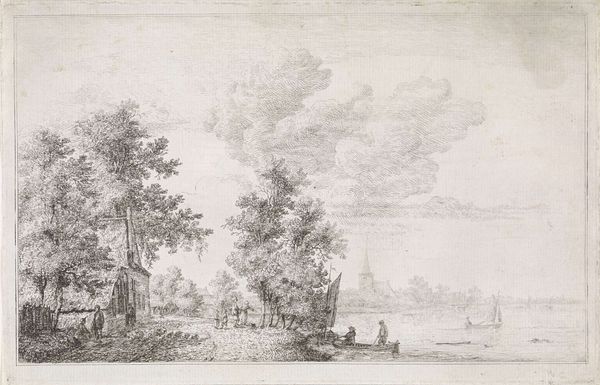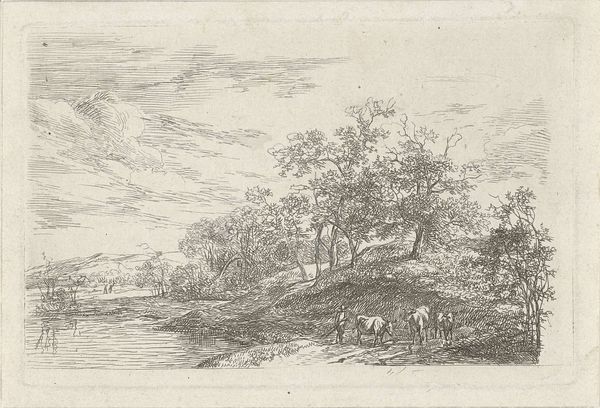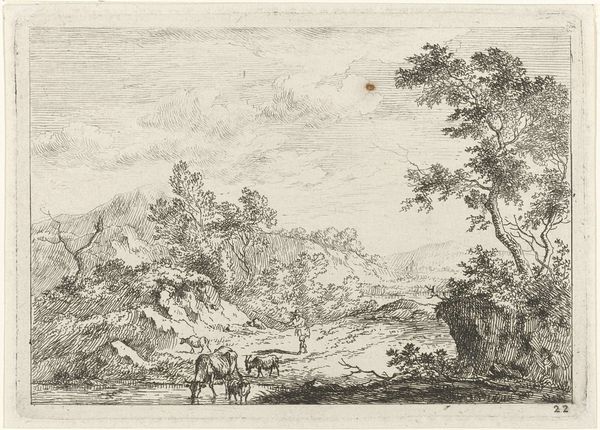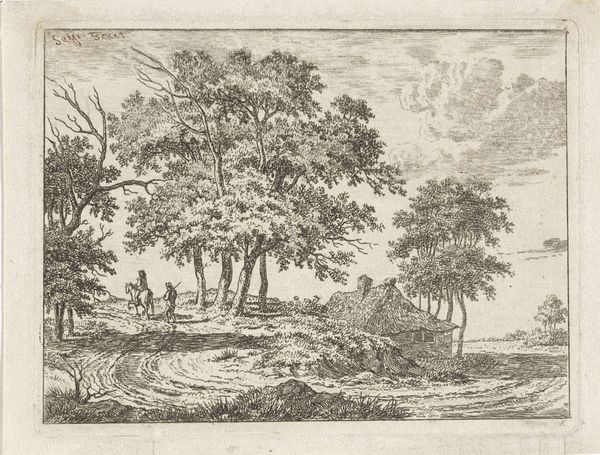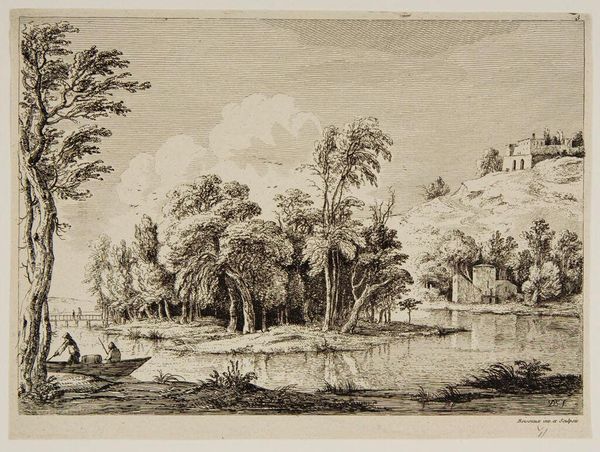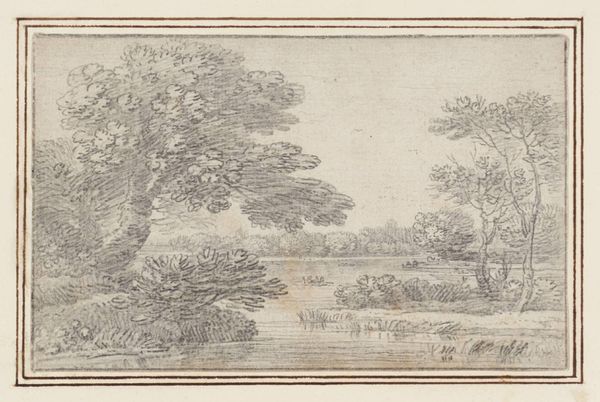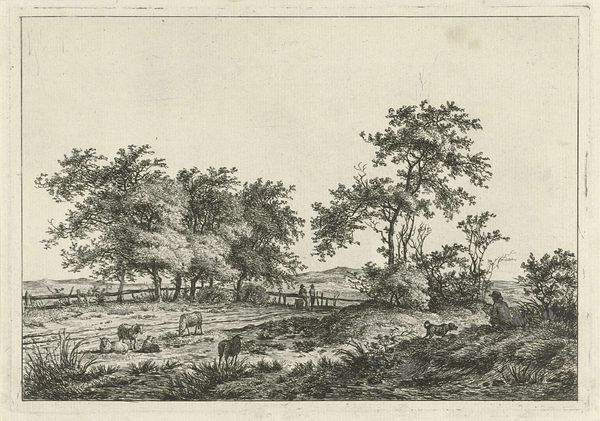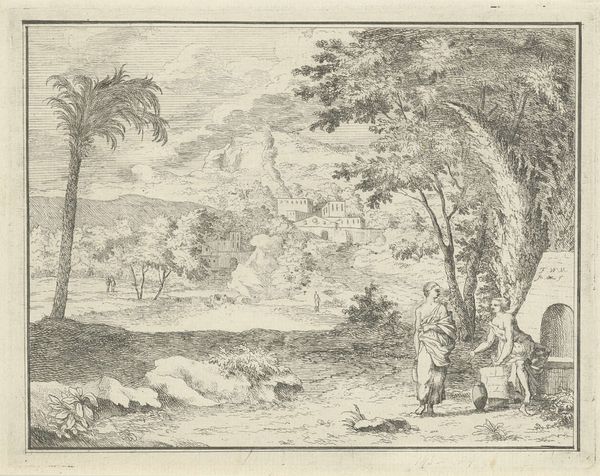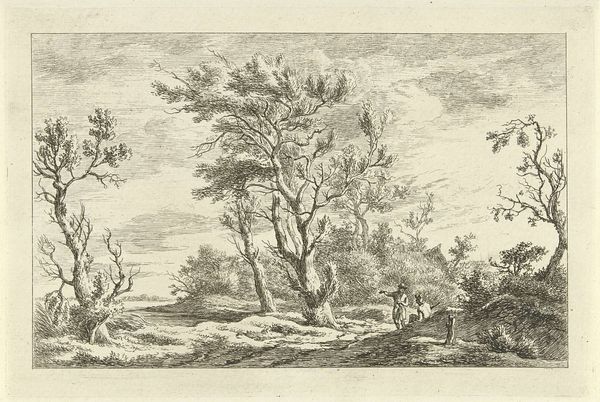
Landschap met herders, jachthonden en een beladen paard die terugkeren na de jacht 1620 - 1664
0:00
0:00
stefanodellabella
Rijksmuseum
etching, engraving
#
baroque
#
etching
#
landscape
#
genre-painting
#
engraving
Dimensions: height 108 mm, width 156 mm
Copyright: Rijks Museum: Open Domain
Stefano della Bella created this landscape with herders, hounds, and a laden horse returning from the hunt using etching, sometime in the mid-17th century. Etching, unlike engraving, allowed for a looser, more expressive line because the artist draws into a wax resist on a metal plate, which is then bitten by acid. This process democratized printmaking, making it less reliant on the engraver's precise skill, and more accessible to artists themselves. Bella, here, uses the etched line to create a sense of depth and atmosphere, capturing the texture of foliage and the play of light on the landscape. Look closely, and you’ll notice the marks are far from uniform. This variability is a hallmark of the etching process, where the artist's hand is directly involved in creating the image. The print also reflects the social context of the time, with hunting as a popular aristocratic pastime. Yet, the print, by its nature, opened the image to a wider audience. So, next time you look at a print, consider the way it was made, and how that making influences not only the image, but its meaning.
Comments
No comments
Be the first to comment and join the conversation on the ultimate creative platform.

